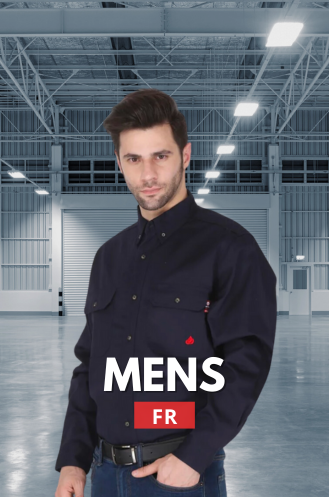In businesses where there is a high risk of fire, such as oil refineries, chemical plants, and welding activities, it is essential to provide workers with FR Clothing. When selecting flame-resistant clothing, it's crucial to consider comfort, durability, and adherence to safety regulations.
In order to ultimately create a safer and more secure work environment, this blog seeks to assist employers and safety managers in making educated decisions when choosing FR Clothing.
Tips for Buying FR Clothing for Workers
Prior to purchasing FR Clothing for employees, take into account these five crucial tips:
1. Understand Safety Standards
Learn about relevant safety regulations from organizations like the American Society for Testing and Materials (ASTM) and the National Fire Protection Association (NFPA) before purchasing flame-resistant apparel. These standards specify the requirements for FR Clothing's durability, arc flash protection, and flame resistance.
To ensure that workers are adequately protected, clothes must either meet or exceed specific criteria.
2. Consider Material Composition
The materials used to make FR Clothing Jeans are specially created to resist sparks and self-extinguish when exposed to flames. Common materials include Nomex, Kevlar, and cotton treated with flame retardant (FR). Every material has advantages in terms of comfort, affordability, and protection.
For instance, FR-treated cotton provides comfort and breathability, while Nomex and Kevlar provide superior heat and flame protection. Select a material according to your work environment's particular risks and comfort needs.
3. Evaluate Fit and Comfort
For FR Clothing to be practical, it must fit properly. It should be comfortable to move in without being overly loose or restricting. Throughout their shifts, employees must be at ease wearing FR Shirts, as discomfort can result in non-compliance.
Look for clothing with cosy styles that consider adjustable parts like cuffs and waistbands. To avoid overheating, make sure the garment permits sufficient airflow.
4. Assess Durability and Maintenance
FR Clothing has to handle a variety of challenging circumstances, including heat, chemicals, and mechanical wear. Before purchasing, consider the durability of the garment by looking at the stitching, seams, and reinforcements.
Recognize the manufacturer's advice regarding upkeep and handling as well. Over time, maintaining the FR qualities of the clothes requires careful laundry and storage. Maintaining worker safety also requires the timely replacement of worn-out clothing and routine inspections.
5. Balance Cost and Quality
While price is important when buying FR Clothing Jacket, quality and safety come first. Premium FR Clothing may initially cost more, but because it offers better protection and durability over time, it will ultimately save you money.
Consider every aspect of the value, such as the service life, warranty, and compliance with safety standards. By weighing options and assessing different suppliers, you may decide which combination of quality and affordability works best.
Conclusion
When selecting FR Clothing for employees, safety regulations, material composition, fit, comfort, longevity, upkeep, and expense must all be carefully taken into account. Employers may guarantee that their employees are sufficiently protected from fire threats while preserving comfort and compliance by adhering to these five suggestions. Purchasing premium FR Clothing improves worker well-being and productivity, in addition to improving workplace safety.
FAQs
Q.1 What are the requirements for FR Clothing?
Ans. Clothing that is fire retardant needs to adhere to ASTM or NFPA safety requirements. It should be resistant to ignition, self-extinguish when exposed to flames, and offer defense against heat and flame risks.
Q.2 How do you choose FR clothing?
Ans. Select FR clothing by considering its adherence to safety regulations, cost-effectiveness, material composition (such as cotton treated with FR or Nomex), appropriate fit for comfort and mobility, and durability over time.
Q.3 What clothing is safe to wear under FR Clothing?
Ans. Wear synthetic materials that do not melt, such as nylon or polyester, underneath flame-resistant clothes to prevent the spread of flames when exposed to heat. Steer clear of naturally flammable materials like cotton.
Q.4 What makes FR clothing fire-resistant?
Ans. Fabrics used to make flame-resistant clothing are either coated with flame-retardant chemicals or have inherent flame resistance, such as aramids or modacrylics. In dangerous situations, these materials offer heat protection, self-extinguishing, and resistance to flames.


